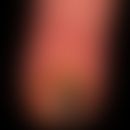Synonym(s)
DefinitionThis section has been translated automatically.
Usnic acid, a lichenic acid, is an antimicrobial agent that is obtained in numerous lichen species of the genus Bearded lichens (e.g. Usnea barbata; Cetaria islandica). Usnic acid causes the greenish-yellowish colouring of numerous lichens. In daily use, usnic acid is found in the so-called silver moss, which is used in the production of flower arrangements and wall decorations.
The antimicrobial effect (Nithyanand P et al. 2015) is mainly used for skin infections, but also in anti-dandruff preparations. It is also used for infections of the upper respiratory tract.
Usnic acid can cause allergic contact reactions (Mitchell JC 1965).
Salts of usnic acid are called usnate.
Note(s)This section has been translated automatically.
The following also belong to the lichen acids: usnaric acid, thamnolic acid, lobaric acid)
LiteratureThis section has been translated automatically.
- Mitchell JC (1965) Allergy to lichens. Allergic contact dermatitis from usnic acid produced by lichenized fungi. Arch Dermatol 92:142-146.
- Nithyanand P et al (2015) Usnic acid inhibits biofilm formation and virulent morphological traits of Candida albicans. Microbiol Res 179:20-28.
- Nithyanand P et al. (2015) Usnic acid, a lichen secondary metabolite inhibits Group A Streptococcus biofilms. Antonie Van Leeuwenhoek 107:263-272.
- Su ZQ et al (2014) Usnic acid protects LPS-induced acute lung injury in mice through attenuating inflammatory responses and oxidative stress. Int Immunopharmacol 22:371-378.



